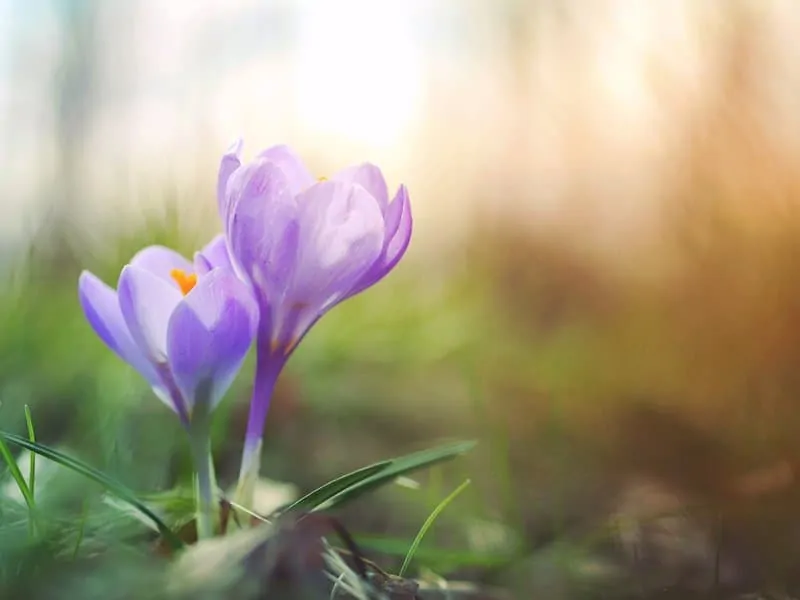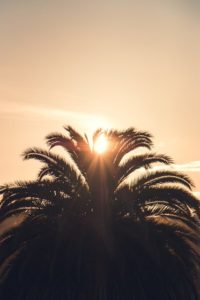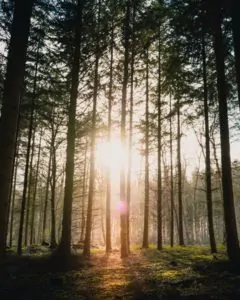Do you love gardens, and you like spending your time with plants. Then it’s pretty obvious to say, you love plants. The greenery we see around us is only because of these plants. We all know they are very busy in the day time but what do they do at night. Do plants grow at night? Do they need darkness or they just love the sun all the time? Today I will discuss all these not so important questions.
In my previous post, I have tried to make it clear that plants do need sunlight. They need sunlight for making their food and of course to get energy. But do you know, Plants also need darkness for their growth?
Do Plants Grow at night? – Yes, this is a very important fact. Actually, the major part of the cell division and growth in plants is done at night. So we can easily conclude that plant need darkness as much as they need sunlight to grow.
Some Myths with Plants and Darkness
I have already said that plant grow at night. But there are some myths regarding this fact.
Many ancient cultures, it was believed that plants possess both good and bad. The bad usually rules the night and this makes the people fear for the forest. Eventually, in some culture, people pray the oldest trees for their wellbeing, on the other hand, to make them die they do curse the tree instead of cutting them off. Interesting isn’t it.
If you belong to any of the South Asian countries like -India, China, Bangladesh or Sri-lanka, then you definitely share my thoughts. In most of these countries, Plants are somehow treated sacred but at night people fear to go near any big tree. There are several reasons for this fear but the most important is the myth about the ghost and demons.
Even in the 21st century, in many parts of the world people believe in these myths relating plants and forest.
Why do plants need Darkness?
Up to now, it is very clear that plants need darkness. But the question arises- why do they need darkness? Maybe you can say, for rest as we do or to sleep.
Actually, it is not very different in theory. We need rest after a long tiring day and so do the plants. Technically, Plants do photosynthesis at day time. Photosynthesis is the process of utilizing light to gain energy.
It is obvious that they are busy in the day. Plants have to spend lots of energy to fulfill active photosynthesis. After all, they do need food and for food, they also have to work hard.
At night though, the Sun is not there to support photosynthesis but the process is still the same. Simple respiration is the same for day and night only the procedure changes. Therefore, to regain energy and maintain growth, plants need to slow down its general processes like the flow of food and water, standard photosynthesis and so on. So plants need darkness for maintaining growth and health.
At night, the main focus of plants in on specific cell division to gain height and length. This is why, when you see the plant in the morning it looks healthier and bigger than the previous day. On the contrary the plant growth especially the volume consistency stunned at day time. So if you put plants in light for whole 24 hours then they will eventually die.
Specifically, if you put your plants in complete darkness for long, they will lose chlorophyll and hence die. So both sunlight and darkness are required for plants to grow healthy.
Harmful Effects of complete darkness in plants
Darkness is essential for plants but not for a long time. If you put any plant in complete darkness for a long time then, it may die. Actually, the lack of sunlight can cause many problems for your plants. There are several symptoms that can inform you about the deficiency of light in plants.
Symptoms of Sunlight Deficiency in plants
- Leggy Seedlings. Yes, it is 100% caused by sunlight deficiency. If plant some seeds and you seedlings are becoming leggy, long stems with few leaves on the tops. It means you should place them in proper sunlight for adequate photosynthesis.
- Yellowing of stems and leaves. Though it can be caused due to deficiency of nitrogen but lack of sunlight is one of the many reasons for nitrogen deficiency. This is why We are advised to feed plants with nitrogen in the winter season when the sun is low.
- Roots coming out of soil instead of going deep. Low sunlight directly affects root growth.
- No flowering in plants. Yes, if your plant is not getting enough sunlight then it will stop blooming. No blooming means no fruits at all.
So if you see any of these symptoms in your plants or seedlings then try changing their place. You should always place them where full sunlight is available, like near a window or a terrace.
Do roots grow at night? – Yes, Roots of most plants grow at night. The food prepared in the form of glucose is utilized at night for cell division. Not only the roots but also stems, flowers, and fruits grow at night. This is the time when the accumulation of food and water is actually done. Besides using glucose, it gets stored in roots, leaves, flowers, and stems. Plants mostly store glucose at night.
Do Plants Sleep?
Technically plants do sleep. Ok, it may contradict with the fact that plants grow at night. Actually sleep doesn’t mean complete inactive state of working. The best part of sleep is that it is the most active phase of growth both in animals and plants.
Technically sleep means inactive for technical external functioning. But the actual state is active always for all internal matters.
In an easy way, I can say when we sleep, our body rests from physical work. But our internal functioning and growth in actually lot faster that daily schedule. Believe me, it is medically proved that our body is in a complete active state internally even if we are sleeping. So the same can be said for plants.
Plants prepare food in the form of glucose in the presence of chlorophyll and sunlight. This is the photosynthesis, it actually requires lots of energy. Also at day time, the temperature is high so evaporation and transpiration rate is high. All these factors restrict the internal growth of plants. On the other hand, at night, the temperature is low, the sun is set and no photosynthesis occurs. This saves a lot of energy. The plant uses this energy to grow and get healthier at night.
More Questions on Plants at night
Do Plants Grow Slower at Night? – No most plants grow faster at night. Actually, you will see significant growth both in height and length in the plant at night. If fond of gardening then this will be an active exercise to note down how much any plant can grow at night?
Do aquarium plants grow at night? – YES, They do. All plants whether on land or in water, grow at night just as they do in a day? Only the internal functioning of plants differs from day to night. Aquarium plants are mostly submerged in water. They still need sunlight for photosynthesis.
The main problem with live aquarium plants rises when we fail to manage the amount of light required by them. Consistency of Light is necessary to maintain the biological cycle of both aquatic plants and animals.
Do plants prepare food at night? – No, They don’t. Actually, plants prepare their food in the presence of sunlight. Sunlight is absent at night (in most countries) so technically they cannot prepare food at night. The process of Respiration is the same at day and at night. Only the process is different and food prepared at day can be consumed at night.
Do plants feed at night? – Yes, plants do feed at night. Actually, the prepared food i.e. glucose is utilized for the general purpose like the flow of food and water in a day. But at night, plants use this glucose to grow its structure, as the length and breadth by active cell division.
Can we water the plants at night? – Yes, you can water your plants at night. Actually, you should water your plants in the evening when the temperature is low. But at night extra moisture on the leaves can cause fungal growth. Fungus-like white mildew can grow in excess of moisture. Watering is night is not favorable for vegetables.
Activity to check the effect of light and darkness in plants
This is the interesting part of this post. In my previous post, I have shown an easy experiment to prove the sensitivity of plants towards light-you can read it here. Today I will show you some easy activities to check the effect of light and darkness in the plants. Don’t worry it is very easy and you could do it on your own.
Method I: –
- Sprout some gram or peas. It is easy to grow. Though you can use any easy to sprout seed, easily available to your locality.
- Pot the seedlings in plastic disposable cups. You can use any soft-drink or water cup for this purpose. You can also try empty cans to pot these seedlings.
- Plant the seedlings in the cups and always remember to make a drainage hole in the bottom.
- Leave the plants to grow for a few days. It will provide strength and height to the plant. Also, chlorophyll will develop for photosynthesis.
- When the plants become dark green, place them in the complete dark where no light can enter. Keep the place cool and maintain air flow for better respiration.
- After a few days you will see, the plants lose chlorophyll in absence of light. Also, the stem will grow longer and become leggy and nearly white or pale in color.
- The experiment concludes two facts, First plants need sunlight for photosynthesis. And second is plant can grow in darkness.
Can plants grow at night, Method II : –
This is a simple experiment for school students.
- Take a healthy plant with bigger leaves. A potted plant is better for this purpose but any plant or even tree will do the job.
- Cover few healthy leaves with duct tape or any dark plastic. This will stop photosynthesis in those leaves.
- After 2 -3 days carefully open the covering from the leaves.
- You will see the color of these leaves become lighter than others. In fact, many of them have become complete pale.
- This experiment proves chlorophyll is only developed in the presence of light, not in darkness. Hence, Plant needs both light and darkness for healthy growth.
Do plant love darkness, Method III: –
This is certainly not an experiment. Actually, it’s just a simple observation. I am sharing what I have seen in my lawn a few days ago.
- Choose a spot in your garden where lots of sunlight is coming and lots of grass is grown.
- Place an empty bucket or any basket over the grass.
- Leave the bucket or basket in the same position for 10-15 days.
- After 15 days when you remove the basket, you will notice that the grass beneath the shade has become pale yellow in color. Even the leaves have become yellow completely.
- You will also notice that the stems of grass have grown longer but the leaves are much shorter than other green grass. You can easily identify the difference between grasses in this spot with the grass in the entire lawn.
- This activity shows the necessity of light as well as darkness for every plant.
Hope you have like this post. I have tried my best to include everything I remember. Still, I think there is much more to say about this topic- Do plants grow at night? Please let me know what do you think about the questions like- What do plant do at night? Do they really need darkness? Can they survive complete darkness and many more?



